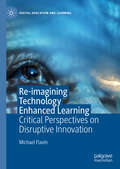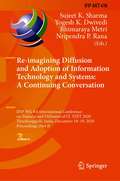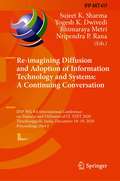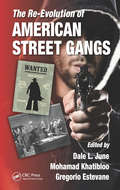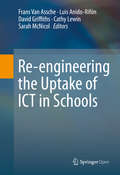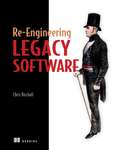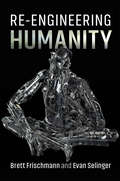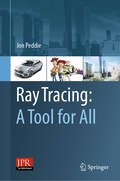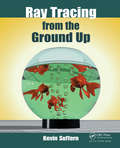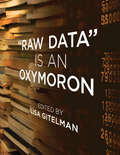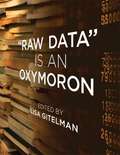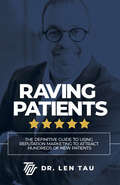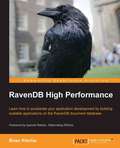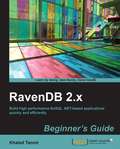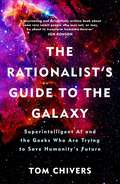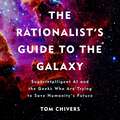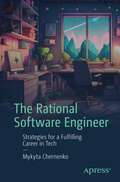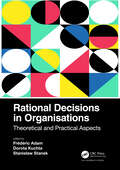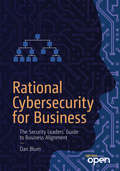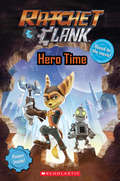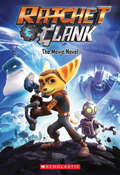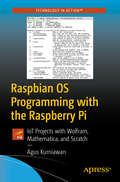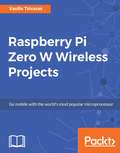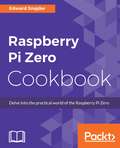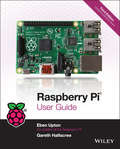- Table View
- List View
Re-imagining Technology Enhanced Learning: Critical Perspectives on Disruptive Innovation (Digital Education and Learning)
by Michael FlavinThis book analyses technology enhanced learning through the lens of Disruptive Innovation theory. The author argues that while technology has not disrupted higher education to date, it has the potential to do so. Drawing together various case studies, the book analyses established technologies through a Disruptive Innovation perspective, including virtual learning environments, and includes Wikipedia as an example of successful innovative disruption. The author also examines the disruptive potential of social media technologies and the phenomenon of user-owned technologies. Subsequently, the author explores strategic narratives for technology enhanced learning and imagines what the Disruptive University might look like in the future. This book will be valuable for scholars of technology enhanced learning in higher education as well as those looking to increase their understanding of and practice with technology enhanced learning.
Re-imagining Diffusion and Adoption of Information Technology and Systems: IFIP WG 8.6 International Conference on Transfer and Diffusion of IT, TDIT 2020, Tiruchirappalli, India, December 18–19, 2020, Proceedings, Part II (IFIP Advances in Information and Communication Technology #618)
by Sujeet K. Sharma Yogesh K. Dwivedi Bhimaraya Metri Nripendra P. RanaThis two-volume set of IFIP AICT 617 and 618 constitutes the refereed proceedings of the IFIP WG 8.6 International Working Conference "Re-imagining Diffusion and Adoption of Information Technology and Systems: A Continuing Conversation" on Transfer and Diffusion of IT, TDIT 2020, held in Tiruchirappalli, India, in December 2020.The 86 revised full papers and 36 short papers presented were carefully reviewed and selected from 224 submissions. The papers focus on the re-imagination of diffusion and adoption of emerging technologies. They are organized in the following parts: Part I: artificial intelligence and autonomous systems; big data and analytics; blockchain; diffusion and adoption technology; emerging technologies in e-Governance; emerging technologies in consumer decision making and choice; fin-tech applications; healthcare information technology; and Internet of ThingsPart II: diffusion of information technology and disaster management; adoption of mobile and platform-based applications; smart cities and digital government; social media; and diffusion of information technology and systems
Re-imagining Diffusion and Adoption of Information Technology and Systems: IFIP WG 8.6 International Conference on Transfer and Diffusion of IT, TDIT 2020, Tiruchirappalli, India, December 18–19, 2020, Proceedings, Part I (IFIP Advances in Information and Communication Technology #617)
by Sujeet K. Sharma Yogesh K. Dwivedi Bhimaraya Metri Nripendra P. RanaThis two-volume set of IFIP AICT 617 and 618 constitutes the refereed proceedings of the IFIP WG 8.6 International Working Conference "Re-imagining Diffusion and Adoption of Information Technology and Systems: A Continuing Conversation" on Transfer and Diffusion of IT, TDIT 2020, held in Tiruchirappalli, India, in December 2020.The 86 revised full papers and 36 short papers presented were carefully reviewed and selected from 224 submissions. The papers focus on the re-imagination of diffusion and adoption of emerging technologies. They are organized in the following parts: Part I: artificial intelligence and autonomous systems; big data and analytics; blockchain; diffusion and adoption technology; emerging technologies in e-Governance; emerging technologies in consumer decision making and choice; fin-tech applications; healthcare information technology; and Internet of ThingsPart II: information technology and disaster management; adoption of mobile and platform-based applications; smart cities and digital government; social media; and diffusion of information technology and systems
The Re-Evolution of American Street Gangs
by Dale L. June Mohamad Khatibloo Gregorio EstevaneThe problem of gangs and gang subculture is a growing threat to the stability of neighborhoods and entire communities. During the past two decades, gang members have increasingly migrated from large urban centers to suburban areas and other countries. This book addresses the intricacies and diversities of street gangs, drawing on the expertise of h
Re-engineering the Uptake of ICT in Schools
by Frans Van Assche Luis Anido David Griffiths Cathy Lewin Sarah McnicolThis book reports on a novel and comprehensive approach to the uptake of ICT in Schools. It focuses on key questions, pedagogically sound ways of introducing ICT, new technical artifacts supporting the approach, the evaluation in a large-scale validator, and future work. While many innovations in Technology Enhanced Learning (TEL) have emerged over the last two decades, the uptake of these innovations has not always been very successful, particularly in schools. The transition from proof of concept to integration into learning activities has been recognized as a bottleneck for quite some time. This major problem, which is affecting many TEL stakeholders, is the focus of this book which focuses on developing a more effective and efficient approach based on more than 2500 pilots in European classrooms. Teachers, head teachers, and policy makers may benefit from reading how novel learning scenarios can be elaborated, adapted to a local context, and implemented in the classroom; how new technologies can support this process for teachers and their national/regional communities; how teachers and other stakeholders can be educated in such a re-engineering process; how the approach can be scaled up through MOOCs, ambassador schemes, and train-the-trainer programs; how future classroom labs can inspire teachers, head teachers, and policy makers; how teachers and, above all, learners can become more engaged in learning through the adoption of the iTEC approach. Readers with a more technical focus may also be interested in the discussion of recommender systems, the flexible provision of resources and services, the deployment of the cloud in schools, and systems for composing technological support for lesson plans.
Re-Engineering Legacy Software
by Chris BirchallSummaryAs a developer, you may inherit projects built on existing codebases with design patterns, usage assumptions, infrastructure, and tooling from another time and another team. Fortunately, there are ways to breathe new life into legacy projects so you can maintain, improve, and scale them without fighting their limitations.Purchase of the print book includes a free eBook in PDF, Kindle, and ePub formats from Manning Publications.About the BookRe-Engineering Legacy Software is an experience-driven guide to revitalizing inherited projects. It covers refactoring, quality metrics, toolchain and workflow, continuous integration, infrastructure automation, and organizational culture. You'll learn techniques for introducing dependency injection for code modularity, quantitatively measuring quality, and automating infrastructure. You'll also develop practical processes for deciding whether to rewrite or refactor, organizing teams, and convincing management that quality matters. Core topics include deciphering and modularizing awkward code structures, integrating and automating tests, replacing outdated build systems, and using tools like Vagrant and Ansible for infrastructure automation. What's InsideRefactoring legacy codebasesContinuous inspection and integrationAutomating legacy infrastructureNew tests for old codeModularizing monolithic projectsAbout the ReaderThis book is written for developers and team leads comfortable with an OO language like Java or C#.About the AuthorChris Birchall is a senior developer at the Guardian in London, working on the back-end services that power the website.Table of ContentsPART 1 GETTING STARTEDUnderstanding the challenges of legacy projects Finding your starting pointPART 2 REFACTORING TO IMPROVE THE CODEBASEPreparing to refactorRefactoringRe-architectingThe Big RewritePART 3 BEYOND REFACTORING—IMPROVING PROJECT WORKFLOWAND INFRASTRUCTUREAutomating the development environmentExtending automation to test, staging, and production environmentsModernizing the development, building, and deployment of legacy softwareStop writing legacy code!
Re-Engineering Humanity
by Evan Selinger Brett FrischmannEvery day, new warnings emerge about artificial intelligence rebelling against us. All the while, a more immediate dilemma flies under the radar. Have forces been unleashed that are thrusting humanity down an ill-advised path, one that's increasingly making us behave like simple machines? <P><P>In this wide-reaching, interdisciplinary book, Brett Frischmann and Evan Selinger examine what's happening to our lives as society embraces big data, predictive analytics, and smart environments. They explain how the goal of designing programmable worlds goes hand in hand with engineering predictable and programmable people. <P>Detailing new frameworks, provocative case studies, and mind-blowing thought experiments, Frischmann and Selinger reveal hidden connections between fitness trackers, electronic contracts, social media platforms, robotic companions, fake news, autonomous cars, and more. <P>This powerful analysis should be read by anyone interested in understanding exactly how technology threatens the future of our society, and what we can do now to build something better.<P> Offers an academically rigorous and interdisciplinary analysis.<P> Written in accessible prose with resonant examples.<P> Includes mind-blowing thought experiments.
Ray Tracing: A Tool for All
by Jon PeddieThis is the first book to offer a comprehensive overview for anyone wanting to understand the benefits and opportunities of ray tracing, as well as some of the challenges, without having to learn how to program or be an optics scientist.It demystifies ray tracing and brings forward the need and benefit of using ray tracing throughout the development of a film, product, or building — from pitch to prototype to marketing.Ray Tracing and Rendering clarifies the difference between conventional faked rendering and physically correct, photo-realistic ray traced rendering, and explains how programmer’s time, and backend compositing time are saved while producing more accurate representations with 3D models that move.Often considered an esoteric subject the author takes ray tracing out of the confines of the programmer’s lair and shows how all levels of users from concept to construction and sales can benefit without being forced to be a practitioner. It treats both theoretical and practical aspects of the subject as well as giving insights into all the major ray tracing programs and how many of them came about.It will enrich the readers’ understanding of what a difference an accurate high-fidelity image can make to the viewer — our eyes are incredibly sensitive to flaws and distortions and we quickly disregard things that look phony or unreal. Such dismissal by a potential user or customer can spell disaster for a supplier, producer, or developer. If it looks real it will sell, even if it is a fantasy animation. Ray tracing is now within reach of every producer and marketeer, and at prices one can afford, and with production times that meet the demands of today’s fast world.
Ray Tracing from the Ground Up
by Kevin SuffernWith the increase in computing speed and due to the high quality of the optical effects it achieves, ray tracing is becoming a popular choice for interactive and animated rendering. This book takes readers through the whole process of building a modern ray tracer from scratch in C++. All concepts and processes are explained in detail with the aid o
Raw Data Is an Oxymoron (Infrastructures)
by Lisa GitelmanEpisodes in the history of data, from early modern math problems to today's inescapable “dataveillance,” that demonstrate the dependence of data on culture. We live in the era of Big Data, with storage and transmission capacity measured not just in terabytes but in petabytes (where peta- denotes a quadrillion, or a thousand trillion). Data collection is constant and even insidious, with every click and every “like” stored somewhere for something. This book reminds us that data is anything but “raw,” that we shouldn't think of data as a natural resource but as a cultural one that needs to be generated, protected, and interpreted. The book's essays describe eight episodes in the history of data from the predigital to the digital. Together they address such issues as the ways that different kinds of data and different domains of inquiry are mutually defining; how data are variously “cooked” in the processes of their collection and use; and conflicts over what can—or can't—be “reduced” to data. Contributors discuss the intellectual history of data as a concept; describe early financial modeling and some unusual sources for astronomical data; discover the prehistory of the database in newspaper clippings and index cards; and consider contemporary “dataveillance” of our online habits as well as the complexity of scientific data curation. Essay Authors Geoffrey C. Bowker, Kevin R. Brine, Ellen Gruber Garvey, Lisa Gitelman, Steven J. Jackson, Virginia Jackson, Markus Krajewski, Mary Poovey, Rita Raley, David Ribes, Daniel Rosenberg, Matthew Stanley, Travis D. Williams
"Raw Data" Is an Oxymoron
by Lisa GitelmanWe live in the era of Big Data, with storage and transmission capacity measured not just in terabytes but in petabytes (where peta- denotes a quadrillion, or a thousand trillion). Data collection is constant and even insidious, with every click and every "like" stored somewhere for something. This book reminds us that data is anything but "raw," that we shouldn't think of data as a natural resource but as a cultural one that needs to be generated, protected, and interpreted. The book's essays describe eight episodes in the history of data from the predigital to the digital. Together they address such issues as the ways that different kinds of data and different domains of inquiry are mutually defining; how data are variously "cooked" in the processes of their collection and use; and conflicts over what can -- or can't -- be "reduced" to data. Contributors discuss the intellectual history of data as a concept; describe early financial modeling and some unusual sources for astronomical data; discover the prehistory of the database in newspaper clippings and index cards; and consider contemporary "dataveillance" of our online habits as well as the complexity of scientific data curation. Essay authors:Geoffrey C. Bowker, Kevin R. Brine, Ellen Gruber Garvey, Lisa Gitelman, Steven J. Jackson, Virginia Jackson, Markus Krajewski, Mary Poovey, Rita Raley, David Ribes, Daniel Rosenberg, Matthew Stanley, Travis D. Williams
Raving Patients: The Definitive Guide To Using Reputation Marketing To Attract Hundreds Of New Patients
by Len TauIn Raving Patients, Dr. Len Tau, a practicing dentist in Philadelphia and online reputation specialist, shares simple tips and best practices to become visible and demonstrate credibility online. Dental practices waste thousands of dollars and hundreds of hours trying to find new patients using methods that may have worked decades ago but no longer work today. Raving Patients teaches dentists how to get exponentially better marketing results for a fraction of the time and money using a simple combination of online and offline reputation marketing strategies that take only minutes to implement. The strategies within Raving Patients help dental practices rise up search engine results when patients in their area search for new dentists. Dr. Tau also presents proven methodologies that help dental practices stand out as the practice of choice in their area. This generates a steady flow of patients who are more likely to move forward with treatment recommendations than other dental marketing strategies.
RavenDB High Performance
by Brian RitchieRavenDB High Performance is comprehensive yet concise tutorial that developers can use to.This book is for developers & software architects who are designing systems in order to achieve high performance right from the start. A basic understanding of RavenDB is recommended, but not required. While the book focuses on advanced topics, it does not assume that the reader has a great deal of prior knowledge of working with RavenDB.
RavenDB 2.x beginner's guide
by Khaled TannirWritten in a friendly, example-driven Beginner's Guide format, there are plenty of step-by-step instructions and examples that are designed to help you get started with RavenDB. If you are a .NET developer, new to document-oriented databases, and you wish to learn how to build applications using NoSQL databases, then this book is for you. Experience with relational database systems will be helpful, but not necessary.
The Rationalist's Guide to the Galaxy: Superintelligent AI and the Geeks Who Are Trying to Save Humanity's Future
by Tom Chivers'A fascinating and delightfully written book about some very smart people who may not, or may, be about to transform humanity forever' JON RONSON'Beautifully written, and with wonderful humour, this is a thrilling adventure story of our own future' LEWIS DARTNELL, author of THE KNOWLEDGE and ORIGINSAre paperclips going to destroy life as we know it?What can Mickey Mouse teach us about how to programme AI?Could a more rational approach to life be what saves us all?This is a book about about a community of people who are trying to think rationally about intelligence and what insight they can and can't give us about the future of the human race. It explains why these people are worried about an AI apocalypse, why they might be right, and why they might be wrong. It is a book about the cutting edge of our thinking on intelligence and rationality right now by the people who stay up all night worrying about it.
The Rationalist's Guide to the Galaxy: Superintelligent AI and the Geeks Who Are Trying to Save Humanity's Future
by Tom Chivers'A fascinating and delightfully written book about some very smart people who may not, or may, be about to transform humanity forever' JON RONSON'The AI does not hate you, nor does it love you, but you are made of atoms which it can use for something else'This is a book about AI and AI risk. But it's also more importantly about a community of people who are trying to think rationally about intelligence, and the places that these thoughts are taking them, and what insight they can and can't give us about the future of the human race over the next few years. It explains why these people are worried, why they might be right, and why they might be wrong.It isn't, on the other hand, a book about the future - it doesn't try to guess how many of us are going to be put out of work by AI, or what the operating system in your house might be able to do ten years hence. Instead, this is a book about the cutting edge of our thinking on intelligence and rationality right now by the people who stay up all night worrying about it.Along the way, we discover why we probably don't need to worry about a future AI resurrecting a perfect copy of our minds and torturing us for not inventing it sooner but we should be concerned about paperclips destroying life as we know it; how Mickey Mouse can teach us an important lesson about how to programme AI; and why Spock is not as logical as we think he is.(p) Orion Publishing Group Ltd 2019
The Rational Software Engineer: Strategies for a Fulfilling Career in Tech
by Mykyta ChernenkoThis book will serve as a framework for you as a software engineer seeking a fulfilling career and wishing to stay passionate and maintain a healthy mental state. It is filled with protocols to achieve effective life-long learning, navigate career development, adapt to changes, maintain work-life balance, and have a healthy lifestyle.As a successful software engineer you tend to focus on improving your technical skills: learning a new programming language, mastering another tool, or using a library. But you also need to build a solid mental framework that will help you navigate your professional development. You need to develop the skills that will help you be a happy software engineer.This book will help you if you feel frustrated, unmotivated, or unhappy; lost in your career path; or uncertain if you want to be a software engineer. It can help you deal with burnout, high levels of stress, or depression; or if you struggle to be productive while working from home. What You Will LearnEfficiently organize your work dayKnow when and how to seek a new project, company, or careerTake care of your body and mind in a software engineering contextUnderstand what contributes to job satisfaction and how to integrate it into your careerUse non-coding activities for your and your company’s benefitBuild healthy relationships with managers and colleaguesWho This Book Is ForThe typical reader of this book is a software engineer who is highly skilled in technical areas but may feel frustrated, unmotivated, or unhappy in their current position and looking for a way to navigate their professional development and find a healthy work-life balance.The book also will appeal to audiences of other IT or tech professionals, such as project managers, product owners, or designers, who work closely with software engineers and want to understand the challenges they face in their roles. Additionally, individuals who are considering a career in software engineering or development may benefit from the book by gaining insight into the profession and understanding the skills and mindset required to be successful.
Rational Decisions in Organisations: Theoretical and Practical Aspects
by Frédéric AdamManagers in organisations must make rational decisions. Rational decision making is the opposite of intuitive decision making. It is a strict procedure utilising objective knowledge and logic. It involves identifying the problem to solve, gathering facts, identifying options and outcomes, analysing them, considering all the relationships and selecting the decision. Rational decision making requires support: methods and software tools. The identification of the problem to solve needs methods that would measure and evaluate the current situation. Identification and evaluation of options and analysis of the available possibilities involves analysis and optimisation methods. Incorporating intuition into rational decision making needs adequate methods that would translate ideas or observed behaviours into hard data. Communication, observation and opinions recording is hardly possible today without adequate software. Information and data that form the input, intermediate variables and the output must be stored, managed and made accessible in a user-friendly manner. Rational Decisions in Organisations: Theoretical and Practical Aspects presents selected recent developments in the support of the widely understood rational decision making in organisations, illustrated through case studies. The book shows not only the variety of perspectives involved in decision making, but also the variety of domains where rational decision support systems are needed. The case studies present decision making by medical doctors, students and managers of various universities, IT project teams, construction companies, banks and small and large manufacturing companies. Covering the richness of relationships in which the decisions should and must be taken, the book illustrates how modern organisations operate in chains and networks; they have multiple responsibilities, including social, legal, business and ethical duties. Nowadays, managers in organisations can make transparent decisions and consider a multitude of stakeholders and their diverse features, incorporating diverse criteria, using multiple types and drivers of information and decision-making patterns, and referring to numerous lessons learned. As the book makes clear, the marriage of theoretical ideas with the possibilities offered by technology can make the decisions in organisations more rational and, at the same time, more human.
Rational Cybersecurity for Business: The Security Leaders' Guide to Business Alignment
by Dan BlumUse the guidance in this comprehensive field guide to gain the support of your top executives for aligning a rational cybersecurity plan with your business. You will learn how to improve working relationships with stakeholders in complex digital businesses, IT, and development environments. You will know how to prioritize your security program, and motivate and retain your team.Misalignment between security and your business can start at the top at the C-suite or happen at the line of business, IT, development, or user level. It has a corrosive effect on any security project it touches. But it does not have to be like this. Author Dan Blum presents valuable lessons learned from interviews with over 70 security and business leaders. You will discover how to successfully solve issues related to: risk management, operational security, privacy protection, hybrid cloud management, security culture and user awareness, and communication challenges.This open access book presents six priority areas to focus on to maximize the effectiveness of your cybersecurity program: risk management, control baseline, security culture, IT rationalization, access control, and cyber-resilience. Common challenges and good practices are provided for businesses of different types and sizes. And more than 50 specific keys to alignment are included.What You Will LearnImprove your security culture: clarify security-related roles, communicate effectively to businesspeople, and hire, motivate, or retain outstanding security staff by creating a sense of efficacy Develop a consistent accountability model, information risk taxonomy, and risk management framework Adopt a security and risk governance model consistent with your business structure or culture, manage policy, and optimize security budgeting within the larger business unit and CIO organization IT spend Tailor a control baseline to your organization’s maturity level, regulatory requirements, scale, circumstances, and critical assets Help CIOs, Chief Digital Officers, and other executives to develop an IT strategy for curating cloud solutions and reducing shadow IT, building up DevSecOps and Disciplined Agile, and moreBalance access control and accountability approaches, leverage modern digital identity standards to improve digital relationships, and provide data governance and privacy-enhancing capabilitiesPlan for cyber-resilience: work with the SOC, IT, business groups, and external sources to coordinate incident response and to recover from outages and come back stronger Integrate your learnings from this book into a quick-hitting rational cybersecurity success plan Who This Book Is For Chief Information Security Officers (CISOs) and other heads of security, security directors and managers, security architects and project leads, and other team members providing security leadership to your business
Ratchet and Clank: Hero Time (Movie Reader)
by Meredith Rusu ScholasticWhen the evil alien Drek decides to destroy every planet in the Solana Galaxy, the Galactic Rangers turn to two unlikely heroes for assistance: Ratchet, a rare Lombax who works as a mechanic, and Clank, a castoff robot from Drek's own forces. Can they work together to stop Drek and save the galaxy? This 48-page reader is packed with pictures from the movie and is geared toward kids ages 5-8.
Ratchet and Clank: The Movie Novel
by Scholastic Kate HowardWhen the evil alien Drek decides to destroy every planet in the Solana Galaxy, the Galactic Rangers turn to two unlikely heroes for assistance: Ratchet, a rare Lombax who works as a mechanic, and Clank, a castoff robot from Drek's own forces. Can they work together to stop Drek and save the galaxy?
Raspbian OS Programming with the Raspberry Pi: IoT Projects with Wolfram, Mathematica, and Scratch
by Agus KurniawanMaster the command line and Raspbian Linux as well as the physical connections of the Pi. With this book you’ll develop skills applicable to other real world applications in both hardware and software development all while working on simple and fun IoT projects that you can do yourself.You'll learn to build programs on the top of Raspbian OS in Raspberry Pi boards. Start by using Raspbian shells to develop programs.Then follow projects and samples step-by-step to get new experiences in Raspbian OS development. You'll also learn the Wolfram Language and Mathematica, Scratch, IoT programs and IoT middleware, Node-RED, Interactive Data Visualization with Jupyter Notebook, and more.There are many features in Raspbian OS and on Raspberry Pi boards perfect for building an IoT program to suite various scenarios. The GPIO pins on your Raspberry Pi allow it to scale further to accomplish all kinds of projects and tasks. Raspbian OS Programming with the Raspberry Pi is your pathway to exploring all of this.What You'll LearnDiscover the basics of programming in the Raspbian OS environment Work with the Raspbian Commandline Develop programs with the Wolfram Language and MathematicaWho This Book Is ForStudents and hobbyists interested in programming on Raspbian OS with Raspberry Pi boards.
Raspberry Pi Zero W Wireless Projects
by Vasilis TzivarasBuild DIY wireless projects using the Raspberry Pi Zero W board About This Book • Explore the functionalities of the Raspberry Pi Zero W with exciting projects • Master the wireless features (and extend the use cases) of this $10 chip • A project-based guide that will teach you to build simple yet exciting projects using the Raspberry Pi Zero W board Who This Book Is For If you are a hobbyist or an enthusiast and want to get your hands on the latest Raspberry Pi Zero W to build exciting wireless projects, then this book is for you. Some prior programming knowledge, with some experience in electronics, would be useful. What You Will Learn • Set up a router and connect Raspberry Pi Zero W to the internet • Create a two-wheel mobile robot and control it from your Android device • Build an automated home bot assistant device • Host your personal website with the help of Raspberry Pi Zero W • Connect Raspberry Pi Zero to speakers to play your favorite music • Set up a web camera connected to the Raspberry Pi Zero W and add another security layer to your home automation In Detail The Raspberry Pi has always been the go–to, lightweight ARM-based computer. The recent launch of the Pi Zero W has not disappointed its audience with its $10 release. "W" here stands for Wireless, denoting that the Raspberry Pi is solely focused on the recent trends for wireless tools and the relevant use cases. This is where our book—Raspberry Pi Zero W Wireless Projects—comes into its own. Each chapter will help you design and build a few DIY projects using the Raspberry Pi Zero W board. First, you will learn how to create a wireless decentralized chat service (client-client) using the Raspberry Pi's features?. Then you will make a simple two-wheel mobile robot and control it via your Android device over your local Wi-Fi network. Further, you will use the board to design a home bot that can be connected to plenty of devices in your home. The next two projects build a simple web streaming security layer using a web camera and portable speakers that will adjust the playlist according to your mood. You will also build a home server to host files and websites using the board. Towards the end, you will create free Alexa voice recognition software and an FPV Pi Camera, which can be used to monitor a system, watch a movie, spy on something, remotely control a drone, and more. By the end of this book, you will have developed the skills required to build exciting and complex projects with Raspberry Pi Zero W. Style and approach A step-by-step guide that will help you design and create simple yet exciting projects using the Raspberry Pi Zero W board.
Raspberry Pi Zero Cookbook
by Edward SnajderOver 80 practical and interesting recipes that explore the plethora of functionalities and opportunities available with Raspberry Pi Zero About This Book • Deep dive into the components of the small yet powerful Raspberry Pi Zero • Get into grips with integrating various hardware, programming, and networking concepts with the so-called “cheapest computer” • Explore the functionalities of this $5 chip through practical recipes Who This Book Is For This book is for programmers and hobbyists who are eager to dive deep into the Raspberry Pi Zero. If you have basic or zero knowledge of the Raspberry Pi Zero, or if you looking for examples of ways to utilize the Raspberry Pi's GPIO interface, then this book is ideal for you. Basic knowledge of Python will be beneficial, and experience with circuitry and electronics will be needed for the later chapters in the book. What You Will Learn • Set up your Raspberry Pi Zero with the operating system, networking, and different interfaces • Get a hands-on introduction to Linux, Python, and shell scripts with the Raspberry Pi Zero • Become a master at driving GPIOs and controlling relays, motors, transistors, buzzers, audio, read switches, and interrupts with the Raspberry Pi Zero • Control GPIOs using the web interface and Node.js • Connect displays, LED matrixes, analog sensors, and digital sensors • Hack the Ethernet on the Raspberry Pi Zero • Make your Raspberry Pi Zero an IoT-based sensor node and remotely monitor your data In Detail The Raspberry Pi Zero, one of the most inexpensive, fully-functional computers available, is a powerful and revolutionary product developed by the Raspberry Pi Foundation. The Raspberry Pi Zero opens up a new world for the makers out there. This book will give you expertise with the Raspberry Pi Zero, providing all the necessary recipes that will get you up and running. In this book, you will learn how to prepare your own circuits rather than buying the expensive add–ons available in the market. We start by showing you how to set up and manage the Pi Zero and then move on to configuring the hardware, running it with Linux, and programming it with Python scripts. Later, we integrate the Raspberry Pi Zero with sensors, motors, and other hardware. You will also get hands-on with interesting projects in media centers, IoT, and more. Style and approach This recipe-based book will ensure you gain an intermediate-level knowledge of the Raspberry Pi Zero. This book contains comprehensive illustrations with specific schematics for each circuit diagram.
Raspberry Pi User Guide
by Gareth Halfacree Eben UptonMake the most out of the world's first truly compact computerIt's the size of a credit card, it can be charged like a smartphone, it runs on open-source Linux, and it holds the promise of bringing programming and playing to millions at low cost. And now you can learn how to use this amazing computer from its co-creator, Eben Upton, in Raspberry Pi User Guide. Cowritten with Gareth Halfacree, this guide gets you up and running on Raspberry Pi, whether you're an educator, hacker, hobbyist, or kid. Learn how to connect your Pi to other hardware, install software, write basic programs, and set it up to run robots, multimedia centers, and more.Gets you up and running on Raspberry Pi, a high-tech computer the size of a credit card Helps educators teach students how to program Covers connecting Raspberry Pi to other hardware, such as monitors and keyboards, how to install software, and how to configure Raspberry Pi Shows you how to set up Raspberry Pi as a simple productivity computer, write basic programs in Python, connect to servos and sensors, and drive a robot or multimedia center Adults, kids, and devoted hardware hackers, now that you've got a Raspberry Pi, get the very most out of it with Raspberry Pi User Guide.
